Aquarium feeders: types, selection, installation and operation
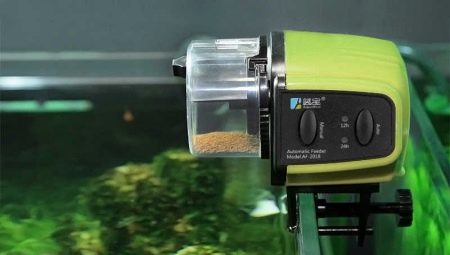
Aquarium feeders are a handy and practical device and allow you to streamline the feeding of your aquarium fish as much as possible. With their help, it is possible to teach the inhabitants of the reservoir to strictly observe the regime and eat in a strictly designated place.

Features and purpose
The debate about whether fish really needs a feeder has been going on for many years. Some aquarists insist that the device is simply necessary and thanks to it, cleanliness and order always reign in the aquarium. Others, on the contrary, are convinced that feeders are not a basic necessity and do well without them.... Therefore, the question of purchasing this device depends on the personal preferences of the owner of the aquarium.
So, the fish feeder is a rather simple structure, the most elementary example of which consists of a limiting contour and a fine-mesh mesh, with its help the food does not settle to the bottom of the aquarium and does not rot in the corners. This helps to keep the aquarium water clean and prevents cloudiness and unpleasant odors.
Besides, particles of live food are much heavier than water, so they strive to sink to the bottom of the tank. Because of this, especially slow fish, which do not know how to feed from the bottom, often remain hungry. The net, on the other hand, reliably holds food and enables timid individuals to eat well.
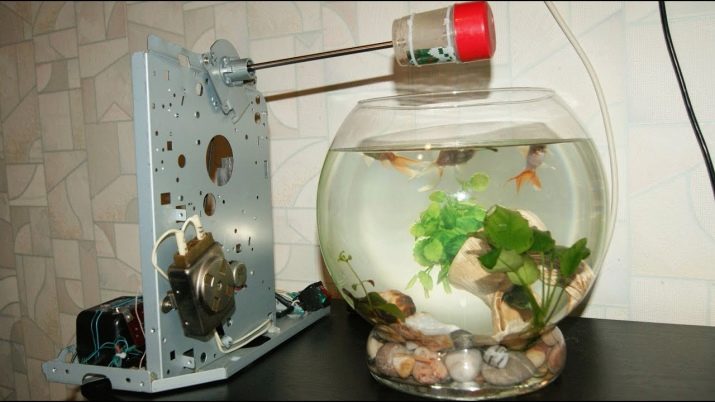
Feeders not equipped with a grid, although they do not hold uneaten food, contribute to its settling in a strictly defined place. This allows the catfish not to scour the bottom in search of food, but purposefully swim to the desired areas and eat calmly.
Moreover, the use of a feeder solves the problem of feeding the fish during the holidays of the owners. However, for these purposes, more sophisticated electronic automatic devices are used, which, in the absence of a person, will feed the inhabitants of the aquarium at a strictly defined time.
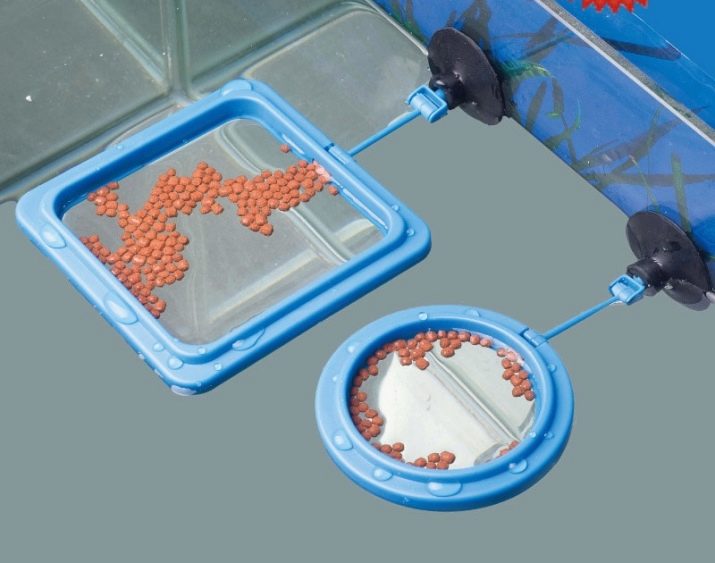
Varieties
The main criterion for the classification of aquarium feeders is the principle of operation. On this basis, there are two types of models.
Floating feeders
Such devices are very simple and often have a homemade design. They are attached to one of the walls of the aquarium using suction cups. They represent a perimeter fence that does not allow the feed to spread out in different directions. While feeding the fish with live food, a cone with a mesh is inserted into the frame, into which the worm bugs are placed. The fish swim freely to the feeder and freely devour living creatures.
The advantage of floating models is simplicity of design, minimal risk of breakage and low cost, and the disadvantages include their inefficiency in the event of a decrease in the water level in the aquarium. The latter circumstance obliges the owners to constantly check that the feeder is in the water in a free-floating state, and does not tilt on its side when grinding the aquarium.
However, this problem is solved by installing a special bracket that slides up and down when the water level changes. These feeders do not need constant monitoring of the liquid and serve excellently for a long time.
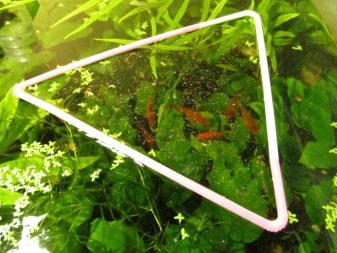

There are situations when it is not possible to purchase a ready-made feeder, then models made with your own hands will come to the rescue. The easiest option would be Styrofoam frame cut from a single piece of 1.5 cm thick sheet.
The advantage of this design will be the penny cost and the fact that even such a simple device is capable of satisfactorily cope with its duties. The disadvantages of foam models include a short service life and a quick loss of appearance, due to the tendency of the material to absorb dirt. Somewhat more durable are rubber feeders, which can be made by bending a rubber tube with a cross section of 1 cm into a ring.
Such structures perfectly float on the water, are resistant to mechanical damage. The main thing in their manufacture is to fix the ends well, otherwise water will enter the tube cavity and the structure will sink.
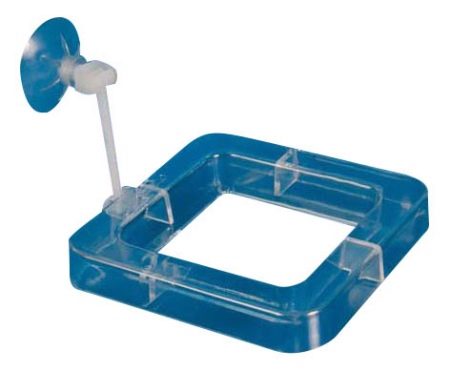
Automatic models
An auto-feeder is an electronic device that allows you to feed fish in an automatic mode. Such models are vital for communities whose owners are absent from home for more than 12 hours or have too many aquariums that require constant attention and care. Besides, automation of the feeding process is indispensable when raising young animals, which should be fed at short intervals. Structurally, automatic feeders consist of an engine, a sealed compartment, a timer with an electronic unit, a niche for a battery and a control unit.
The principle of operation of automatic feeders is quite simple and looks like this:
- food is poured into a special compartment located above the water level;
- the timer is programmed for a specific time;
- at the right time, a portion of food is thrown out of the perforated drum;
- after emptying, the drum rotates and refills with feed.


To adjust the amount of feed mixture, a special plate is used that moves back and forth, thereby reducing or increasing the volume of the drum. Drum instances are the simplest design, however. In addition to them, there are still auger and disc models, as well as designs with a damper.In auger feeders, the amount of feed is measured using a worm shaft, and in products with a shutter, the feed is dosed out into the aquarium when it is opened. Sample discs are made up of several compartments that dispose of a portion of food in turn.
As a power source for automated feeders, it is used network or AA batteries. The cost of car feeders varies from 1.5 to 5 thousand rubles and depends on the functionality and volume of the models. The advantages of electronic copies include the complete automation of the fish feeding process, which allows you to be away from home for more than three days.
Among the disadvantages are the high cost and the impossibility of using live and frozen feed. In addition, in the absence of the owner for a long time, the fish will be forced to eat only one type of food. In order for the livestock to be healthy and develop correctly, the fish diet must be more saturated and varied.
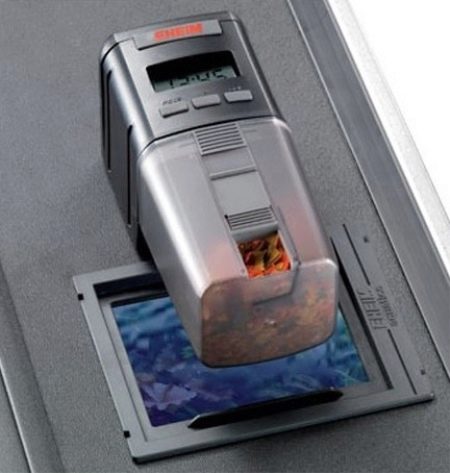
How to choose?
When choosing an aquarium feeder it is necessary to focus on such an important point as the frequency of feeding the livestock. Modern automatic models can be programmed to dispense food three or more times a day. In addition, there are options that start "feeding" the fish only after a certain period of time. That's why if the owner is absent from home for 6-8 hours, then the best option would be a simple electronic model with batteries.
In the case of a longer absence, you need to purchase feeders that operate from the network and are able to consistently deliver food for two months. These samples are equipped with a capacious container and are quite expensive.
If the owners are at home and have the opportunity to feed the fish on their own, then there is no point in purchasing an auto feeder. You can limit yourself to a floating factory or homemade device.

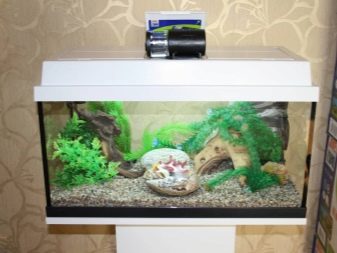
Where to place?
The correct position of the feeder makes it possible to feed the fish as comfortable and safe as possible... So, regardless of the power and type of design, the feeders should be installed away from the filtration and aeration systems of the aquarium.
Otherwise, the food will be washed away by the current, which creates the filter, and taken to places that are inconvenient for fish. As a result, part of the food will settle along the road and begin to rot, while the other part will be dispersed throughout the aquarium, which will not allow the fish to eat fully. Besides, when installing automatic feeders powered by the mains, it is necessary to take into account the availability of outlets.

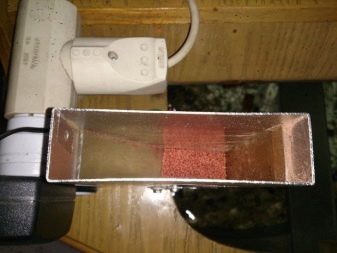
How to use it correctly?
Before using the automatic feeder, you must carefully read the instructions.
- Most of the models are very easy to program, it is not difficult to set them up for the required number of feedings. Many of the standard models are designed for 60 feedings, which allows you to accurately calculate the amount of feed.
- It is recommended that the product be tested for several days immediately after purchase. And if there are no failures in work during this period, then you can start the feeder for permanent use.
- Periodically remove the product from the water and clean it with algae and feed residues. This will eliminate the risk of mold and extend its life.
- To prevent clumping of food, some aquarists connect a compressor to the feeder, which blows the pellets and prevents them from sticking together.
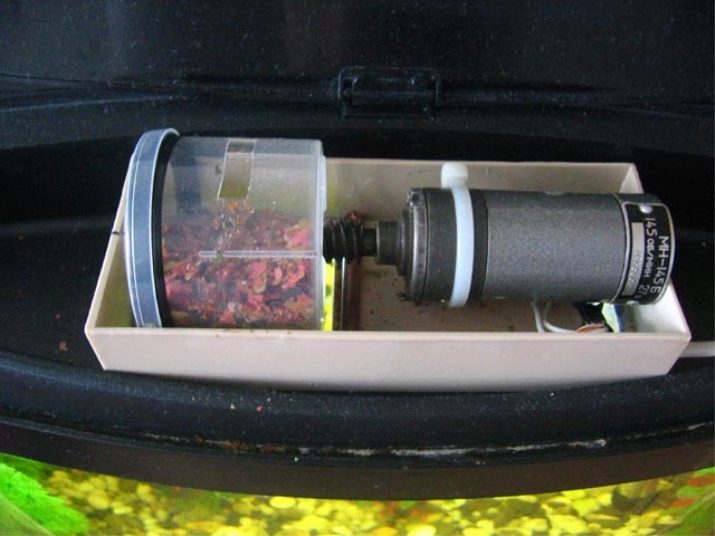
Even if the feeder works flawlessly and has proven itself only on the positive side, you should not leave the fish alone for too long. This is due to the fact that any, even the most reliable mechanism can break down, and the livestock will die of hunger. Better to ask someone to check the automatic devices once a week. So, the owner will be calmer, and the fish will remain safe and sound.
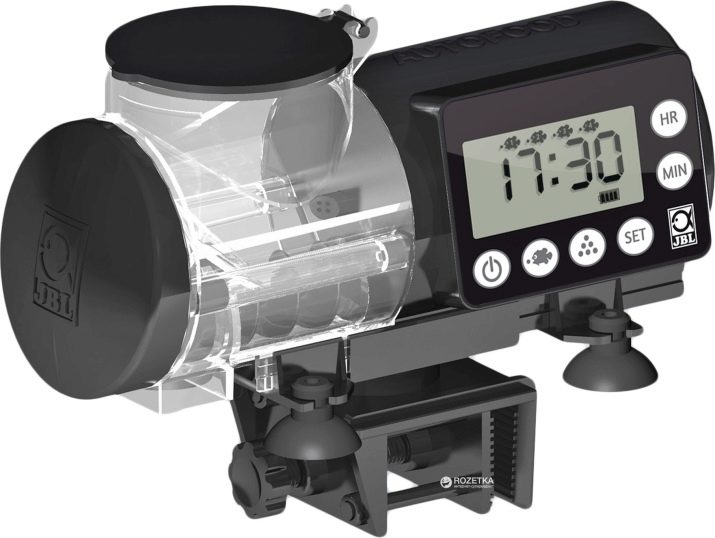
An overview of the Auto Food P-01 automatic feeder for aquarium fish see below.








